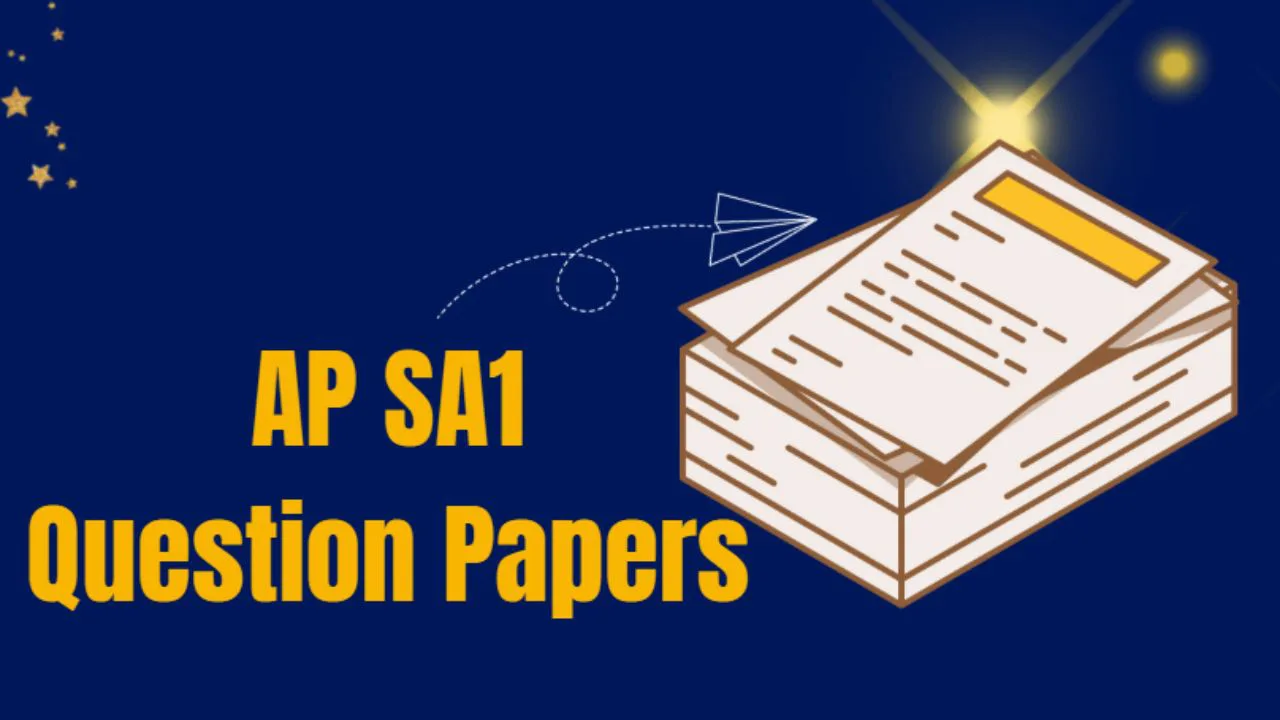AP Intermediate 1st Year Syllabus 2025-26: The Andhra Pradesh Board of Intermediate Education (BIEAP) has announced the New AP Intermediate 1st Year Syllabus for the academic year 2025-26. According to new Education Reforms, the 10th Syllabus was changed last year, and This Year’s Inter 1st Year Syllabus has been modified. For the coming year, the Inter 2nd Year Syllabus will also be changed.
Andhra Pradesh Board of Intermediate Education (BIEAP) is the state-level education board that monitors Intermediate education for both first year. This BIEAP is responsible for all tasks like Syllabus, Examinations, Results, etc. The Board also conducts work related to Inter education in the AP State. Every year, the BIEAP has to change the AP Intermediate 1st Syllabus Patterns and conduct examinations for the students appearing.
AP Intermediate 1st Year Syllabus 2025-26
| Board Name | Board of Intermediate Education Andhra Pradesh (BIEAP) |
| Article Category | AP Inter Syllabus 2025-26 |
| Class | Intermediate 1st Year |
| Groups | MPC, BIPC, CEC, HEC and etc.. |
| Subjects | Telugu, English, Botany, Urdu, Sanskrit, Mathematics, Physics, Chemistry |
| Medium | Telugu Medium, English Medium, Urdu Medium |
| Category | AP, Intermediate, Syllabus |
| Academic Year | 2025-26 |
| Official Website | bie.ap.gov.in |
AP Intermediate 1st Year Syllabus 2025-26 PDF Download
Students appearing for or pursuing the AP Intermediate can check the AP Intermediate 1st Year New Syllabus 2025 from the link provided below. The syllabus links are provided for intermediate 1st-year subjects such as Mathematics, chemistry, Physics, Zoology, Botany, Commerce, Economics, History, Civics, Psychology, Logic, Sociology, Public Administration, Geography, and Geology.
Syllabus for First year Intermediate from Academic Year 2025-26
All Private Junior College students must also follow the syllabus for all the groups like MPC, BIPC, CCEC, MEC, and any other groups of IPE and download the syllabus subject-wise from the below.
Mathematics (1st Year)
1.Sets
- Introduction
- Sets and their Representations
- The Empty Set
- Finite and Infinite Sets
- Equal Sets
- Subsets
- Universal Set
- Venn Diagrams
- Operations on Sets
- Complement of a Set
2. Relations and functions
- Introduction
- Cartesian Product of Sets
- Relations
- Functions
3. Trigonometric functions
- Introduction
- Angles
- Trigonometric Functions
- Trigonometric Functions of Sum and Difference of Two Angles
4. Complex number and quadratic equations
- Introduction
- Complex Numbers
- Algebra of Complex Numbers
- The Modulus and the Conjugate of a Complex Number
- Argand Plane and Polar Representation
5. Linear inequalities
- Introduction
- Inequalities
- Algebraic Solutions of Linear Inequalities in One Variable and their Graphical Representation
6. Permutations and combinations
- Introduction
- Fundamental Principle of Counting
- Permutations
- Combinations
7. Binomial theorem
- Introduction
- Binomial Theorem for Positive Integral Indices
8. Sequences and series
- Introduction
- Sequences
- Series
- Geometric Progression (GP.)
- Relationship Between M. and G. M
9. Straight lines
- Introduction
- Slope of a Line
- Various Forms of the Equation of a Line
- Distance of a Point from a Line
10. Conic sections
- Introduction
- Sections of a Cone
- Circle
- Parabola
- Ellipse
- Hyperbola
11. Introduction to three dimensional geometry
- Introduction
- Coordinate Axes and Coordinate Planes in Three Dimensional Space
- Coordinates of a Point in Space
- Distance between Two Points
12. Limits and derivatives
- Introduction
- Intuitive Idea of Derivatives
- Limits
- Limits of Trigonometric Functions
- Derivatives
13. Statistics
- Introduction
- Measures of Dispersion
- Range
- Mean Deviation
- Variance and Standard Deviation
14. Probability
- Event
- Axiomatic Approach to Probability
Physics (1st Year) Syllabus
1. UNITS AND MEASUREMENTS
Introduction
The International system of units
Significant figures
Dimensions of Physical Quantities
Dimensional formulae and dimensional equations
Dimensional analysis and its applications
2. MOTION IN A STRAIGHT LINE
Introduction
Instantaneous velocity and speed
Acceleration
Kinematic equations for uniformly accelerated motion
3. MOTION IN A PLANE
Introduction
Scalars and vectors
Multiplication of vectors by real members
Addition and subtraction of vectors – graphical Method
Resolution of vectors
Vector addition – Analytical method
Motion in a plane
Motion in a plane with constant acceleration
Projectile motion
Uniform circular motion
4. LAWS OF MOTION
Introduction
Aristotle’s fallacy
The law of inertia
Newton’s first law of motion
Newton’s second law of motion
Newton’s third law of motion
Conservation of momentum
Equilibrium of a particle
Common forces in mechanics, friction
Circular motion
Solving problems in
5. WORK,ENERGY AND POWER
Introduction
Notions of work and kinetic energy: The work-energy
Work
Kinetic Energy
Work done by a variable force
The work – energy theorem for a variable force
The concept of Potential energy
The conservation of mechanical energy
The Potential energy of a spring
Power
Collisions
6. SYSTEM OF PARTICLES AND ROTATIONAL MOTION
Introduction
Centre of mass
Motion of Centre of mass
Linear momentum of a system of particles
Vector product of two vectors
Angular velocity and its relation with linear velocity
Torque and angular momentum
Equilibrium of a rigid body and centre of gravity
Moment of inertia
Kinematics of rotational motion about a fixed axis
Dynamics of rotational motion about a fixed
Angular momentum in case of rotations about a fixed
7. GRAVITATION
Introduction
Kepler’s laws
Universal law of gravitation
The gravitational constant
Acceleration due to gravity of the earth
Acceleration due to gravity below and above the surface of
Gravitational potential energy
Escape speed
Earth Satellites
Energy of an orbiting satellite
8. MECHANICAL PROPERTIES OF SOLIDS
Introduction
Stress and strain
Hooke’s law
Stress – strain curve
Elastic moduli
Applications of elastic behavior of materials
9. MECHANICAL PROPERTIES OF FLUIDS
Introduction
Pressure
Stream line flow
Bernoulli’s principle
Viscosity
Surface tension
10. THERMAL PROPERTIES OF MATTER
Introduction
Temperature and Heat
Measurement of temperature
Ideal – gas equation and absolute temperature
Thermal expansion
Specific Heat capacity
Calorimetry
Change of state
Heat transfer
Newton’s law of
11. THERMODYNAMICS
Introduction
Thermal equilibrium
Zeroth law of thermodynamics
Heat, internal energy and work
First law of thermodynamics
Specific heat capacity
Thermodynamic state variables and equation of state
Thermodynamic processes
Second law of thermodynamics
Reversible and irreversible processes
Carnot engine
12. KINETIC THEORY
Introduction
Molecular nature of matter
Behavior of gases
Kinetic theory of an ideal gas
Laws of equipartition of energy
Specific heat capacity
Mean free path
13. OSCILLATIONS
Introduction
Periodic and oscillatory motions
Simple Harmonic motion
Simple Harmonic motion and uniform circular motion
Velocity and acceleration in simple harmonic motion
Force law for simple harmonic motion
Energy in simple harmonic motion
The Simple Pendulum
14. WAVES
Introduction
Transverse and longitudinal waves
Displacement relation in a progressive wave
The speed of a travelling wave
The principle of superposition of waves
Reflection of waves
Beats
Chemistry (1st Year) Syllabus
Unit 1 Some Basic Concepts of Chemistry
- Importance of Chemistry
- Nature of Matter
- Properties of Matter and their Measurement
- Uncertainty in Measurement
- Laws of Chemical Combinations
- Dalton’s Atomic Theory
- Atomic and Molecular Masses
- Mole Concept and Molar Masses
- Percentage Composition
- Stoichiometry and Stoichiometric Calculations
Unit 2 Structure of Atom
- Discovery of Sub-atomic Particles
- Atomic Models
- Developments Leading to the Bohr’s Model of Atom
- Bohr’s Model for Hydrogen Atom
- Towards Quantum Mechanical Model of the Atom
- Quantum Mechanical Model of Atom
Unit 3 Classification of Elements and Periodicity in Properties
- Why do we Need to Classify Elements?
- Genesis of Periodic Classification
- Modern Periodic Law and the Present Form of the Periodic Table
- Nomenclature of Elements with Atomic Numbers > 100
- Electronic Configurations of Elements and the Periodic Table
- Electronic Configurations and Types of Elements: 82 s-, p-, d-, f- Blocks
- Periodic Trends in Properties of Elements
Unit 4 Chemical Bonding and Molecular Structure
- Kössel-Lewis Approach to Chemical Bonding
- Ionic or Electrovalent Bond 106 3 Bond Parameters
- The Valence Shell Electron Pair Repulsion (VSEPR) Theory
- Valence Bond Theory
- Hybridisation
- Molecular Orbital Theory
- Bonding in Some Homonuclear Diatomic Molecules
- Hydrogen Bonding
Unit 5 Thermodynamics
- Thermodynamic Terms
- Applications
- Measurement of ∆U and ∆H: Calorimetry
- Enthalpy Change, ∆rH of a Reaction – Reaction Enthalpy
- Enthalpies for Different Types of Reactions
- Spontaneity
- Gibbs Energy Change and Equilibrium
Unit 6 Equilibrium
- Equilibrium in Physical Processes
- Equilibrium in Chemical Processes – Dynamic Equilibrium
- Law of Chemical Equilibrium and Equilibrium Constant
- Homogeneous Equilibria
- Heterogeneous Equilibria
- Applications of Equilibrium Constants
- Relationship between Equilibrium Constant K, Reaction Quotient Q and Gibbs Energy G
- Factors Affecting Equilibria
- Ionic Equilibrium in Solution
- Acids, Bases and Salts
- Ionization of Acids and Bases
- Buffer Solutions
- Solubility Equilibria of Sparingly Soluble Salts
Unit 7 Redox Reactions
- Classical Idea of Redox Reactions-Oxidation and Reduction Reactions
- Redox Reactions in Terms of Electron Transfer Reactions
- Oxidation Number
- Redox Reactions and Electrode Processes
Unit 8 Organic Chemistry – Some Basic Principles and Techniques
- General Introduction
- Tetravalence of Carbon: Shapes of Organic Compounds
- Structural Representations of Organic Compounds
- Classification of Organic Compounds
- Nomenclature of Organic Compounds
- Isomerism
- Fundamental Concepts in Organic Reaction Mechanism
- Methods of Purification of Organic Compounds
- Qualitative Analysis of Organic Compounds
- Quantitative Analysis
Unit 9 Hydrocarbons
- Classification
- Alkanes
- Alkenes
- Alkynes
- Aromatic Hydrocarbon
- Carcinogenicity and Toxicity
Biology (1st Year) Syllabus
A – BOTANY SYLLABUS
UNIT I – DIVERSITY IN THE LIVING WORLD Chapter 1 BIOLOGICAL CLASSIFICATION
- Kingdom monera
- Kingdom Protista
- Kingdom Fungi
- Kingdom Plantae
- Kingdom Animalia
- Viruses, viroid and Lichens
Chapter 2 PLANT KINGDOM
- Algae
- Bryophytes
- Pteridophytes
- Gymnosperms
- Angiosperms
UNIT II STRUCTURAL ORGANISATION IN PLANTS Chapter 3 MORPHOLOGY OF FLOWERING PLANTS
- The root
- The stem
- The leaf
- The inflorescence
- The flower
- The fruit
- The seed
- Semi technical description of a typical flowering plant
- Solanaceae
Chapter 4 ANATOMY OF FLOWERING PLANTS
- The tissue system
- Anatomy of Dicotyledonous and Monocotyledonous plants
UNIT III CELL STRUCTURE AND FUNCTIONS Chapter 5 CELL – THE UNIT OF LIFE
- What is a cell?
- Cell theory
- An overview of cell
- Prokaryotic cells
- Eukaryotic cells
Chapter 6 BIOMOLECULES
- How to analyse chemical compositon?
- Primary and Secondary metabolites
- Bio Macro molecules
- Proteins
- Polysaccharides
- Nucleic acids
- Stucture of proteins
- Enzymes
Chapter 7 CELL CYCLE AND CELL DIVISION
- Cell cycle
- M phase
- Significance of Mitosis
- Meiosis
- Significance of Meiosis
UNIT IV PLANT PHYSIOLOGY
Chapter 8 PHOTOSYNTHESIS IN HIGHER PLANTS
- What do we know?
- Early experiments
- Where does photosynthesis takes place?
- How many pigments are involved in Photosynthesis?
- What is light Reaction?
- The Electron Transport
- Where are the ATP and NADPH used?
- The C4 Pathway
- Photo respiration
- Factors affecting photosynthesis
Chapter 9 RESPIRATION IN PLANTS
- Do plants breathe?
- Glycolysis
- Fermentation
- Aerobic respiration
- The respiratory balance sheet
- Amphibolic pathway
- Respiratory Quotient
Chapter 10 PLANT GROWTH AND DEVELOPMENT
- Growth
- Differentiation, Dedifferentiation and Redifferentiation
- Development
- Plant growth regulators
B – ZOOLOGY SYLLABUS
UNIT I : DIVERSITY IN THE LIVING WORLD
Chapter-1: The Living World
- Diversity in the living world
- Taxonomic categories
Chapter-2 : Animal Kingdom
- Basis of classification
- Classification of animals
UNIT II : STRUCTURAL ORGANISATION
Chapter -3 Structural Organization in Animals
- Organ and Organ Systems
- Frog
UNIT III: HUMAN PHYSIOLOGY
Chapter-4: Breathing and Exchange of Gases
- Respiratory Organs
- Mechanism of Breathing
- Exchange of Gases
- Transport of Gases
- Regulation of Respiration
- Disorders of Respiratory System
Chapter-5: Body Fluids and Circulation
- Blood
- Lymph (Tissue Fluid)
- Circulatory Pathways
- Double Circulation
- Regulation of Cardiac Activity
- Disorders of Circulatory System
Chapter 6: Excretory Products and their Elimination
- Human Excretory System
- Urine Formation
- Function of the Tubules
- Mechanism of Concentration of the Filtrate
- Regulation of Kidney Function
- Micturition
- Role of other Organs in Excretion
- Disorders of the Excretory System
Chapter 7: Locomotion and Movement
- Types of Movement
- Muscle
- Skeletal System
- Joints
- Disorders of Muscular and Skeletal System
Chapter-8: Neural Control and Coordination
- Neural System
- Human Neural System
- Neuron as Structural and Functional Unit of Neural System
- Central Neural System
Chapter-9: Chemical Coordination and Integration
- Endocrine Glands and Hormones
- Human Endocrine System
- Hormones of Heart, Kidney and Gastrointestinal Tract
- Mechanism of Hormone Action








